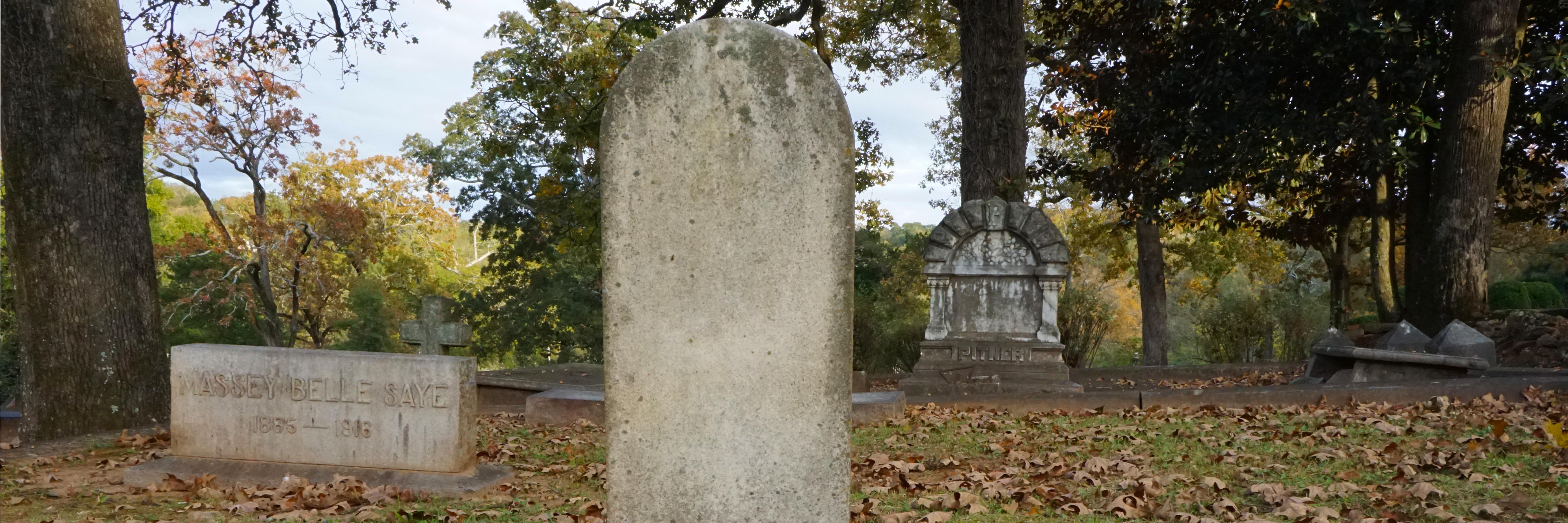Old Athens Cemetery
Officially founded in 1801, the Old Athens Cemetery on Jackson Street was the original burial ground for the community. As a public space, burial required no fee and wide swath of the community was interred within the cemetery’s grounds. The enslaved, too, were buried here. “When I passes by de old graveyard on Jackson Street, I 'members lots of folkses whats buried dar, bofe white folkses and slaves too, for den white folkses put dey slaves whar dey aimed to be buried deyselves. Dat sho' used to be a fine graveyard,” recalled Willis Cofer, a former slave, in 1938. Due to overcrowding, the cemetery closed in 1856, but occasional burials were still held into the 1880s and 1890s. The University of Georgia’s campus grew around and, indeed, on top of the cemetery. A fenced-in section of the cemetery -- containing the marked graves of mostly white Athenians -- is now sandwiched between the UGA's Visual Arts Building and Baldwin Hall. Despite encroachment onto scared land, buried bodies -- especially Black bodies -- were not removed. Municipal sidewalks and streets were widened in the 1880s and, as the Banner Watchman reported, “every heavy rain washes up human bones and pieces of coffins . . . The sidewalk is one succession of graves.” In the 1930s, the University of Georgia constructed academic buildings, including Baldwin Hall, atop land previous used as a burial ground for the enslaved. Again, the bodies were not removed. In 2015, construction on Baldwin Hall unearthed the remains of formerly enslaved African Americans, who were, after considerable controversy, later reinterred in Oconee Hill Cemetery -- a controversial decision, given the history of that cemetery as a predominately white burial ground.
Address: S Jackson St, Athens, Georgia 30602
NEXT: Spaulding Cemetery


